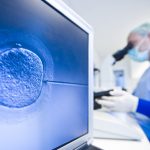 AI has been increasingly deployed in various stages of the pregnancy process, whether it’s reminding women to take the contraceptive pill, to tracking and monitoring ovulation cycles. The Prague Fertility Centre aim to take things a step further.
AI has been increasingly deployed in various stages of the pregnancy process, whether it’s reminding women to take the contraceptive pill, to tracking and monitoring ovulation cycles. The Prague Fertility Centre aim to take things a step further.
They’re using AI as part of the IVF process, via a fertility treatment that they refer to as CATI (Cognitive automation of time-lapse images). They believe it’s the first automated technology that uses AI to recognize and sort embryos.
Embryos are sorted according to a specific criteria known as morphokinetic. It’s a crucial step in the IVF process, as alongside aneuploidy screening (PGS), it helps to prevent the misdiagnosis of mosaic embryos. The team believe that their system can improve the chances of success by 30-40%. In other words, for a 40 year old woman, whose chances of pregnancy might be ordinarily 20%, it would give them a success probability of around 50-60%, which is akin to that of a much younger woman.
“Preimplantation genetic screening (PGS) is a screening tool that is being used to help further improve embryo selection and is successful. However, there is a drawback with this method in that false negative/positive results can occur in mosaic embryos, leading to the rejection of viable embryos,” the researchers say. “CATI removes this disadvantage by detecting abnormal cleavage patterns and providing valuable information on the dynamics of the embryo morphologic changes, so that only viable embryos are used. The automatic statistic analysis enables the evaluation of multiple embryo markers at the same time to remove human error and only select those that are relevant to embryo implantation ability.”
By applying both PGS and CATI, the team believe they can hugely increase the likelihood of a healthy live birth. What’s more, they believe that the process can significantly enhance the probability of success in all women with at least one parameter of their reproductive abilities affected, whether this is due to age, multiple miscarriages or repeated failure of implantation.